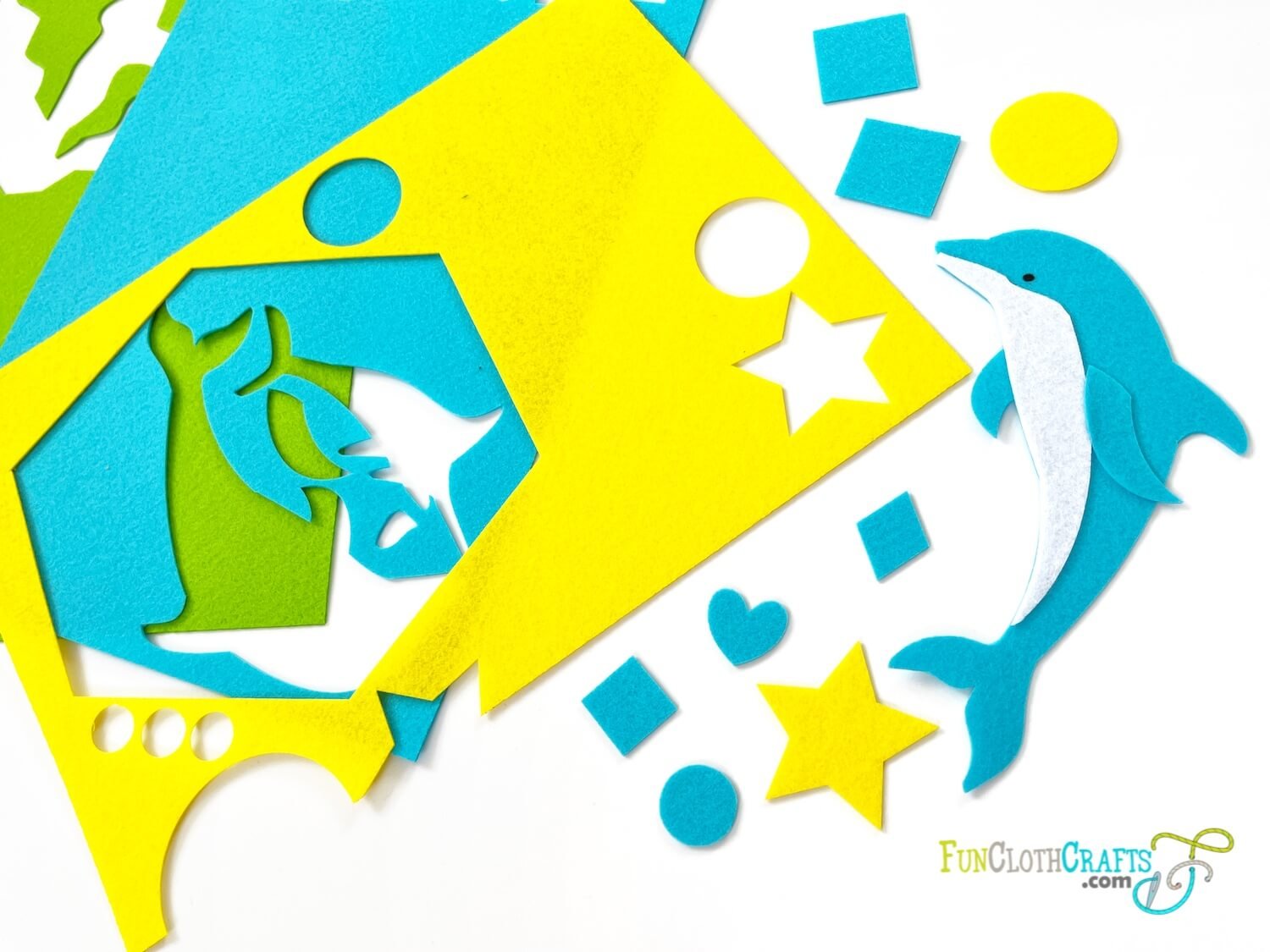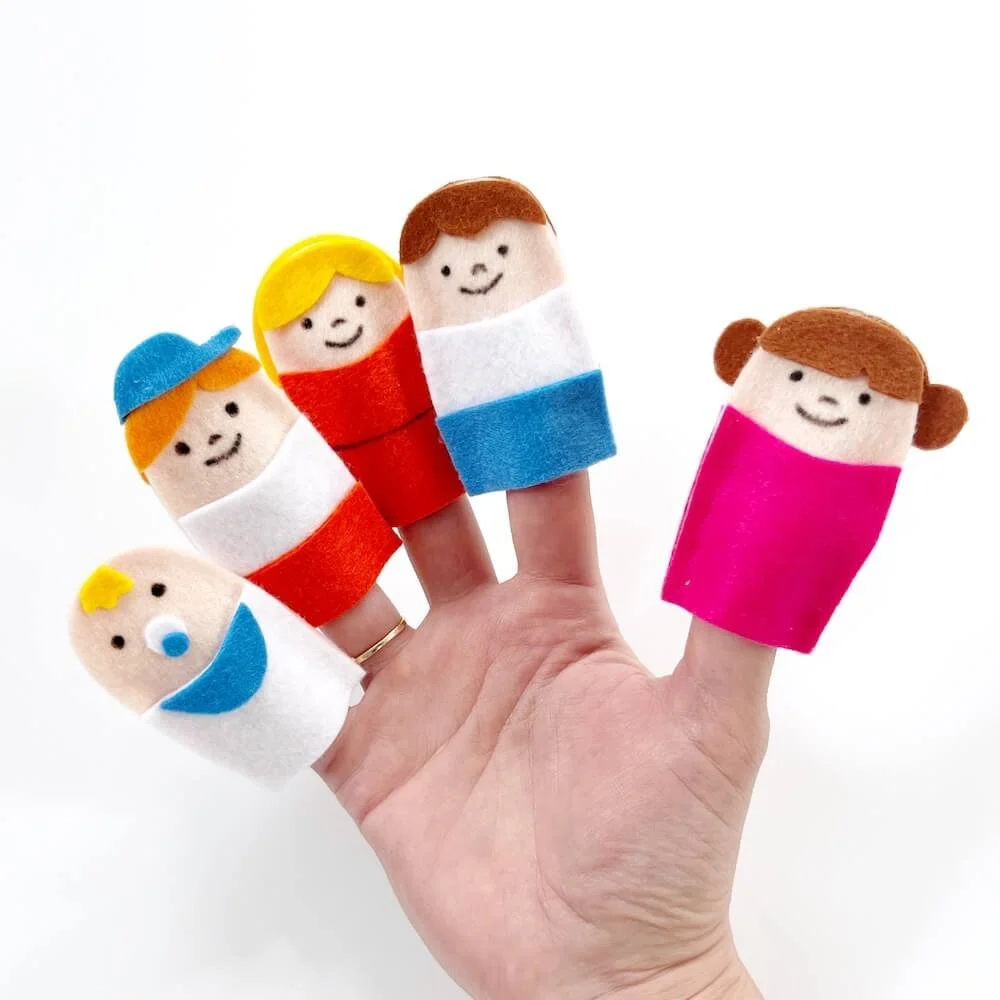This page contains affiliate links, which means I may earn a small commission at no additional cost to you if you click through the link and make a purchase. For more information, click here.
My Favorite Tools for Felt Crafts [Guide]
Felt crafting is a fun and creative hobby that has gained popularity over the years. From creating cute felt toys to making stunning home décor pieces, felt crafts allow you to express your creativity and add a personal touch to your projects. And if you add embroidery, you craft amazing handmade pieces. However, to ensure that your felt projects look amazing, it is essential to have the right tools. In this guide, I will review some of my favorite tools for felt crafts and provide tips on how to use them.
What Tools Do I Need for Felt
When it comes to felt crafts, having the right tools can make all the difference. One essential tool is the felt sheet or felt yard, which is the foundation for the felt projects. Felt sheets come in a variety of colors and thicknesses, allowing crafters to choose the perfect material for their projects. Cutting tools for felt are also a must-have. Scissors with a sharp, pointed tip are ideal for intricate cuts, while rotary cutters make quick work of larger shapes. Additionally, felt embroidery tools, such as embroidery needles and embroidery floss, are necessary for adding intricate details and decorative stitches to felt crafts. If you want to connect two pieces of felt together, having the right glue that works on felt is a must. Lastly, having a collection of felt craft patterns is invaluable. Whether it's for making plush toys, ornaments, or felt flowers, having a library of patterns provides endless inspiration and guidance for the creative journey. So, stock up on these essential tools for felt and let your imagination run wild in the world of felt crafts!
What Type of Felt Do I Prefer?
Felt fabric, as felt sheets or felt yardage, is a basic tool for felt crafts, and it's important to find the right kind for your projects. I've tried a variety of felts, from low-cost acrylic to high-quality wool felt, and I've learned through trial and error what works best for my felt crafts.
My first felt, cheap acrylic, was difficult to work with because it would stretch when cut and sewn. It also had a varying density of fibers. When kids played with the felt board pieces made with this felt, the pieces would fuzz quickly (and I wanted to cry that my creation was ruined so fast).
Thankfully, I discovered Benzie Designs and their wool blend felt. It's been a game-changer! This felt is much easier to work with and doesn't fuzz or pill as easily, even with kids playing with the felt crafts. I still have some felt sheets of Benzie felt at home. Then I moved from Mexico to Europe and couldn't buy these felt sheets anymore as importing this felt made it pricey. So I've been searching for a local alternative I can trust. I haven't found a reliable and good wool blend felt supplier yet. Therefore, I started to use 100% PES Korean felt from Manverko and Puzzliky. This felt has an EU certification and can be used for felt toys for kids younger than three years. It's easy to cut and doesn't pill that easily. I also tried stiff Korean felt, which is excellent for felt board story pieces - said that I prefer not to use it for finger puppets. I also tried wool felt, which is fantastic to work with and use, but I couldn't justify the considerably higher price compared to wool blend felt or Korean felt.
For other suggestions on where to buy felt (recommendations I collected on social media), visit the types of felt in how to sew felt post.
TIP: You can do these simple tests to quickly evaluate the quality of felt:
If the felt sheet appears transparent in some places when held up to the light, it is probable that you possess low-quality felt.
Use a small felt piece and attempt to stretch it. If it stretches effortlessly, it is likely to be of poor quality.
For the final examination, gently rub the felt with a finger to gauge the amount of fuzz produced. If it generates little balls of fiber immediately, it is unsuitable for a project where the felt craft will be regularly handled.
What Are My Essential Tools for Cutting Felt?
When cutting felt, there are several tools to consider, where sharp rather small scissors are essential. In addition to scissors, there are other cutting tools to consider for felt crafts, such as rotary cutters and die-cutting machines.
I have KAI 5 1/2 embroidery scissors (N5135) and KAI 6 1/2 sewing scissors (N5165). Both are excellent for every day felt cutting usage. I prefer the shorter ones.
TIP: To maintain the sharpness of your scissors, use them exclusively when cutting felt.
TIP Two: For cutting detailed shapes in felt, ensure your scissors have sharp, pointed blades.
TIP Three: Do not attempt to sharpen your felt scissors at home using inappropriate tools, as I have caused damage to mine.
When it comes to cutting straight lines on felt, whether it's squares or rectangles, having a larger pair of shears can come in useful. I have Fiskars 9-inch Razor Edged Shears. I used them to cut felt shapes for the felt letter banner ‘MOM’ sign, and Birthday DIY banner.
If you want to make your straight cutting even easier and faster, I like using a rotary cutter (I have Omnigrid 45mm pressure sensitive rotary cutter and Olfa Prym 45mm rotary cutter), a cutting mat, and a non-slip quilter's ruler. For tasks such as cutting pages for quiet books, memory game base pieces, and the felt crown base piece, these are excellent tools to have. Definitely, it's not a must.
I also own two scalloping shears to make scalloped cuts. These shears leave decorative edges. I bought mine through AliExpress. If you want to check these shears, consider Fiskars pinking shears.
TIP: Explore six different ways to cut felt in Learn how to cut out felt tutorial.
Lately, I’ve used my die cut machines to cut felt. I own the manual die cut machine Sizzix Big Shot and the digital die cut machine Cricut Maker. With Sizzix I cut felt flowers and letters. I use Cricut Maker for many of my felt craft patterns that I design in a program called Graphic, and then I convert them into SVG files to cut them with my Cricut Maker. I also like to use my Cricut Maker for other DIY crafts - cards and paper 3D houses.
What Are the Benefits of Using a Die-cutting Machine for Felt?
A die-cutting machine can cut felt into various shapes and sizes quickly and easily. These machines are highly versatile and can also cut other materials, making them a great investment for any crafter. The Sizzix Big Shot when using BIGz dies can cut 3-4 felt sheets at the same time, but it's limited to the dies you purchase. While the Cricut Maker uses software and SVG or other files to cut felt. Be aware that Cricut Maker can have difficulties cutting small intricate felt shapes and it might be easier to cut those by hand.
TIP: You can read the advantages and disadvantages of the die cutting machines in the post Which die-cutting machine shall I buy for felt.
What Are the Best Tools for Felt Embroidery and Stitching?
Felt embroidery and stitching can add a beautiful touch to your felt projects. Here are some of the essential tools I have when working with felt.
I sew and embroider all my felt crafts with embroidery floss. Embroidery floss is composed of 6 individual strands of thread twisted into one thick strand. Depending on the design, I separate one to three-strands of the embroidery floss. I have a wide collection of embroidery floss from DMC, Mouline, and Anchor. DMC is known for it's high quality and color stability, but I find all of the mentioned brands good quality for my crafts. I store the embroidery floss in embroidery floss organizer from DMC.
As for the needle, I hand sew with embroidery needles from PRYM and John James. The last ones I bought are embroidery needles size seven from John James and they are great.
What Are Some Additional Tools and Supplies for Successful Felt Crafts?
In addition to the basic tools for felt, several other supplies can be useful for successful felt crafting.
What Types of Glue Are Best for Felt Projects?
When it comes to gluing felt, it's best to use glue that works on felt. I have Tilswall hot glue gun, Aleene's tacky glue, and Beacon Fabri-Tac glue. Aleene’s tacky glue is my go-to for kids’ crafts. Tilswall hot glue gun for felt flower making and Beacon Fabri-Tac glue for felt boards.
TIP: Read additional information about the best glue for felt in the How to glue felt post. I've tested different glue, and the post is quite insightful on the results.
What Other Felt Designers Do I Follow?
Benzie Design with their free tutorials made by other felt makers. They have about 100 free felt patterns on their website.
Handmade Florist - for amazing felt flowers
Betz White - for felt embroidery hoops
The Yellow Birdhouse - for free felt patterns, felt flower patterns and ornaments.
Sew a Softie - for easy to sew kids' felt toy patterns. I've participated in the Sew a softie initiative with Unicorn Softie and Fairy Softie.














![Cute DIY Felt Elephant Pattern [Easy and Free]](https://images.squarespace-cdn.com/content/v1/5f68de73f977627048ed931f/1693397109384-D862N0VE5SL26I3QN2IH/Felt+Elephant+Pattern+-+Free+Felt+Pattern+-+Cute+Stuffed+Felt+Elephant+-+Thumbnail.jpeg)
![Unicorn Felt Pattern [Free Finger Puppet Pattern]](https://images.squarespace-cdn.com/content/v1/5f68de73f977627048ed931f/1692949722187-12HRB4KTZREOW9S36A32/Unicorn+Felt+Pattern+%7C+Felt+unicorn+keychain+and+felt+unicorn+finger+puppet+in+pink+color+looking+left+%7C+Thumbnail.jpeg)

![Enchanting Woodland Animal Finger Puppets [Free Pattern]](https://images.squarespace-cdn.com/content/v1/5f68de73f977627048ed931f/1690731385758-V9EAARSSZUQPR9XZC008/Woodland+animal+finger+puppets+with+free+pattern+Thumbnail.jpg)